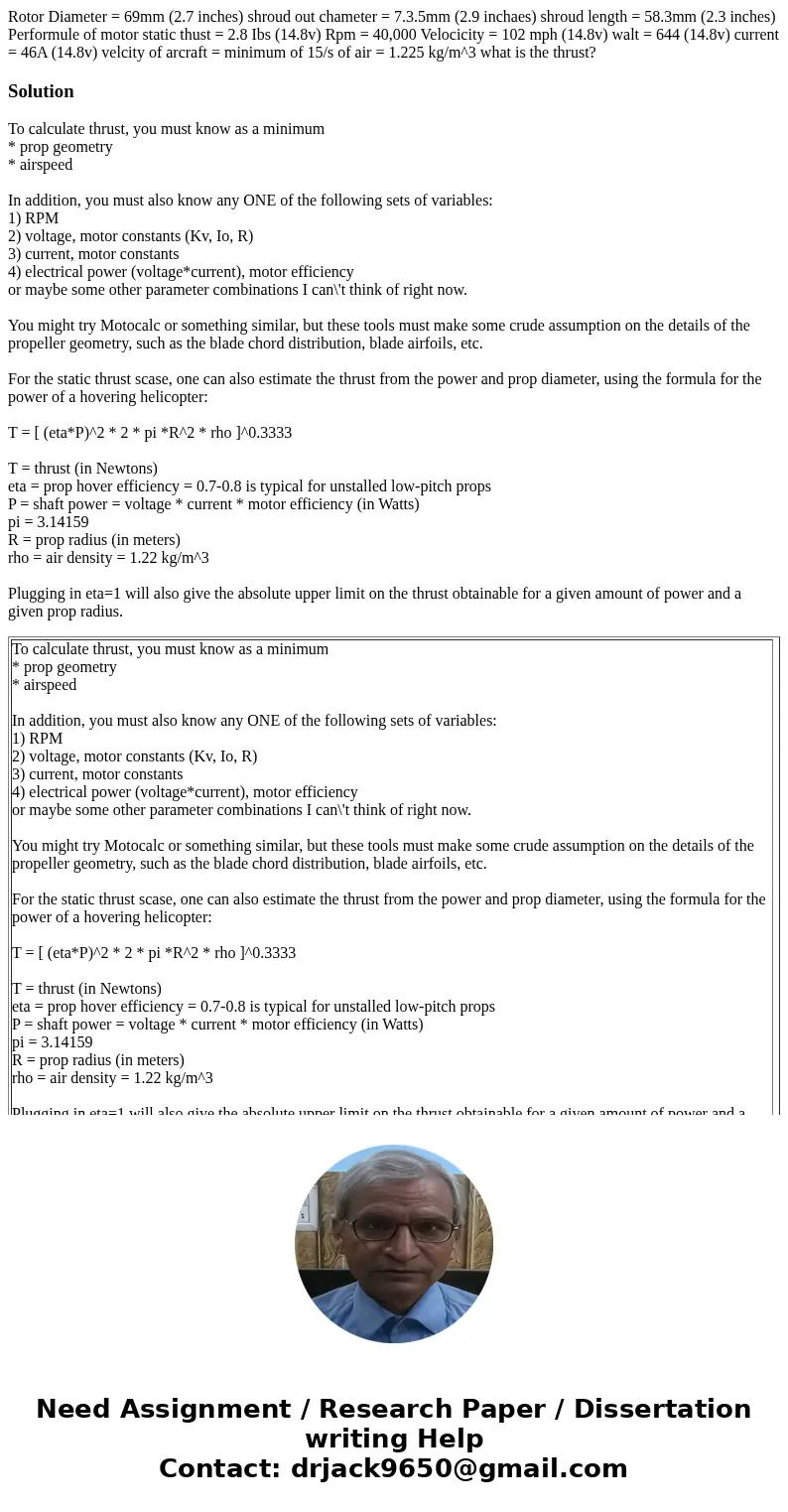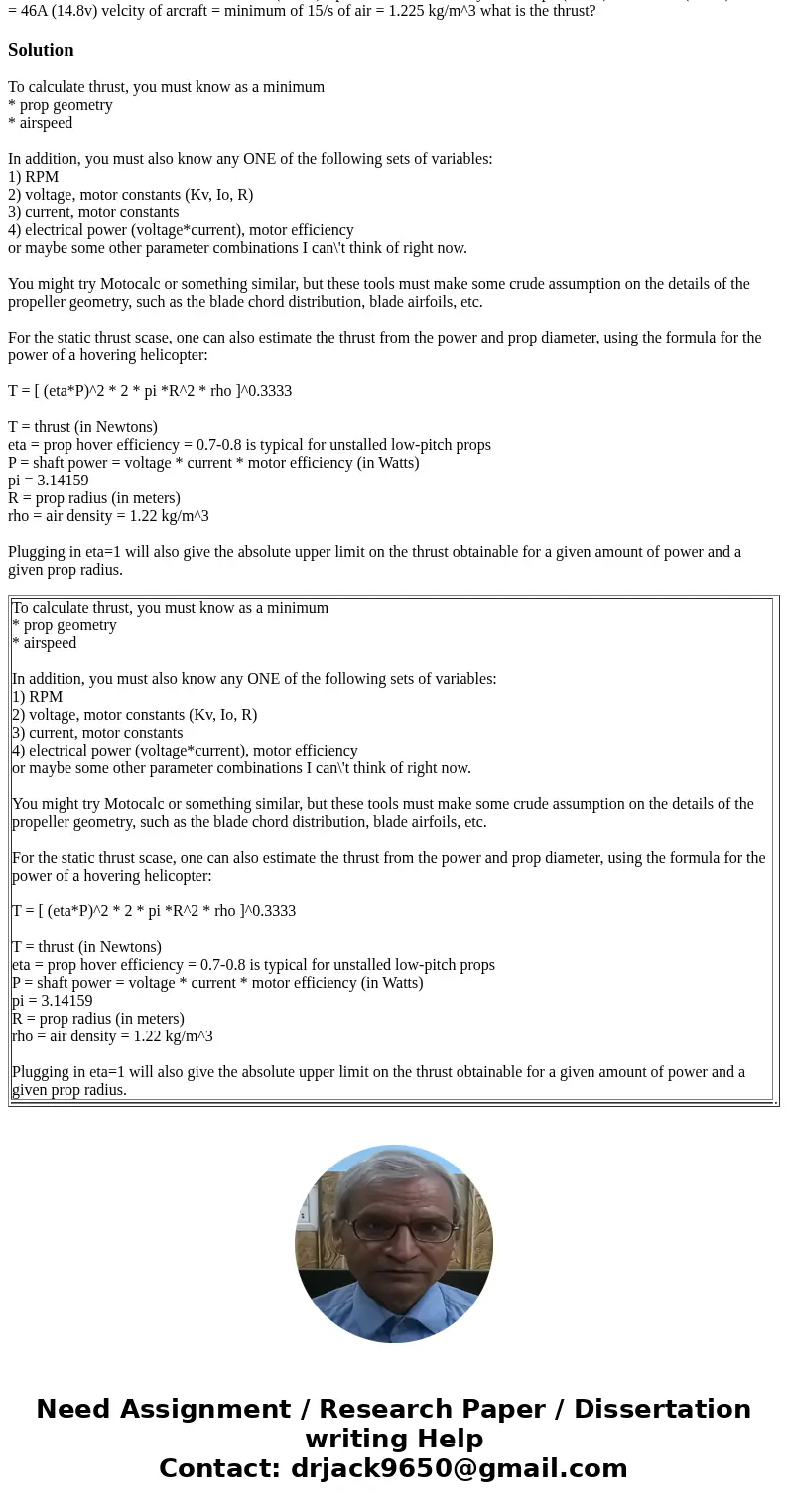Rotor Diameter = 69mm (2.7 inches) shroud out chameter = 7.3.5mm (2.9 inchaes) shroud length = 58.3mm (2.3 inches) Performule of motor static thust = 2.8 Ibs (14.8v) Rpm = 40,000 Velocicity = 102 mph (14.8v) walt = 644 (14.8v) current = 46A (14.8v) velcity of arcraft = minimum of 15/s of air = 1.225 kg/m^3 what is the thrust?
To calculate thrust, you must know as a minimum
* prop geometry
* airspeed
In addition, you must also know any ONE of the following sets of variables:
1) RPM
2) voltage, motor constants (Kv, Io, R)
3) current, motor constants
4) electrical power (voltage*current), motor efficiency
or maybe some other parameter combinations I can\'t think of right now.
You might try Motocalc or something similar, but these tools must make some crude assumption on the details of the propeller geometry, such as the blade chord distribution, blade airfoils, etc.
For the static thrust scase, one can also estimate the thrust from the power and prop diameter, using the formula for the power of a hovering helicopter:
T = [ (eta*P)^2 * 2 * pi *R^2 * rho ]^0.3333
T = thrust (in Newtons)
eta = prop hover efficiency = 0.7-0.8 is typical for unstalled low-pitch props
P = shaft power = voltage * current * motor efficiency (in Watts)
pi = 3.14159
R = prop radius (in meters)
rho = air density = 1.22 kg/m^3
Plugging in eta=1 will also give the absolute upper limit on the thrust obtainable for a given amount of power and a given prop radius.
| To calculate thrust, you must know as a minimum
* prop geometry
* airspeed
In addition, you must also know any ONE of the following sets of variables:
1) RPM
2) voltage, motor constants (Kv, Io, R)
3) current, motor constants
4) electrical power (voltage*current), motor efficiency
or maybe some other parameter combinations I can\'t think of right now.
You might try Motocalc or something similar, but these tools must make some crude assumption on the details of the propeller geometry, such as the blade chord distribution, blade airfoils, etc.
For the static thrust scase, one can also estimate the thrust from the power and prop diameter, using the formula for the power of a hovering helicopter:
T = [ (eta*P)^2 * 2 * pi *R^2 * rho ]^0.3333
T = thrust (in Newtons)
eta = prop hover efficiency = 0.7-0.8 is typical for unstalled low-pitch props
P = shaft power = voltage * current * motor efficiency (in Watts)
pi = 3.14159
R = prop radius (in meters)
rho = air density = 1.22 kg/m^3
Plugging in eta=1 will also give the absolute upper limit on the thrust obtainable for a given amount of power and a given prop radius. |
| |


 Homework Sourse
Homework Sourse